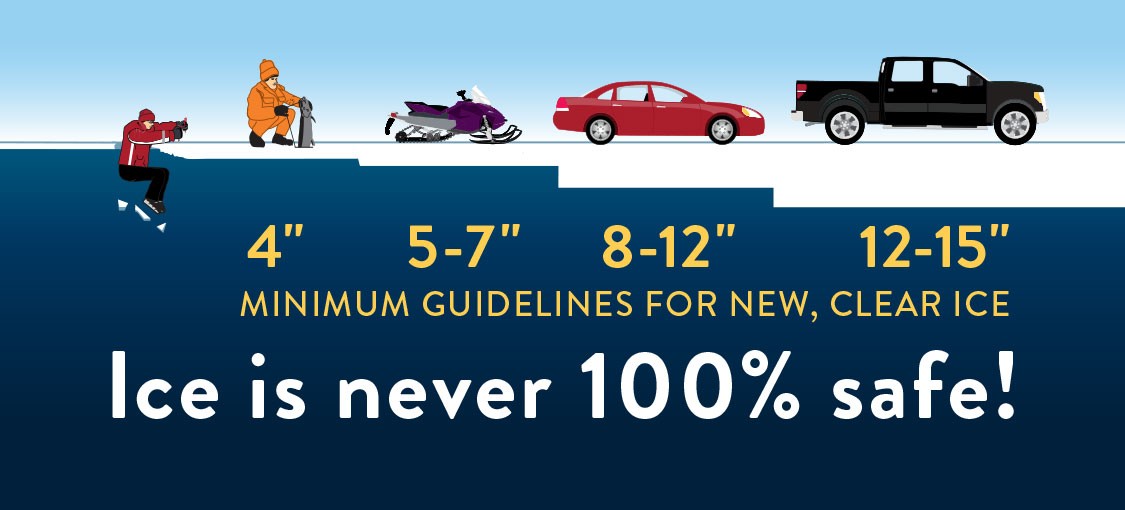Ice fishing is in full swing in some parts of the state, while in others people are waiting for a string of cool weather to make the ice thick enough to walk on. Lisa Dugan, recreation safety outreach coordinator for the Minnesota Department of Natural Resources Enforcement Division, says ice conditions can change quickly this time of year, and even where there appears to be enough ice it’s vital that people check its thickness often.
“Ice is never really 100 percent safe, especially in the early part of the season when thickness can vary widely even on the same body of water. Check the ice for yourself, and use an ice chisel to check as you go since conditions can change rapidly. And don’t take someone else’s word for it or assume it’s thick enough because you read it on social media. At the end of the day, your safety is your responsibility.”
The DNR-recommended minimum thickness for walking on new, clear ice is 4 inches. Wait for 5 to 7 inches before you head out on an ATV or snowmobile, and keep your car off until there are 8 to 12 inches. If you’re planning to drive out in a truck, wait until there are at least 12 to 15 inches.
Checking ice thickness
Before heading out on ice:
Temperature, snow cover, currents, springs and rough fish all affect the relative safety of ice. Ice is seldom the same thickness over a single body of water; it can be two feet thick in one place and one inch thick a few yards away. Check the ice at least every 150 feet.
Ways to check ice thickness:
ICE CHISEL–
An ice chisel is a metal rod with a sharp, flat blade welded onto one end. Drive the chisel into the ice, using a stabbing motion, to create a hole. Next, measure ice thickness with a tape measure.
ICE AUGER–
There are 3 different kinds of augers: hand, electric and gas. Hand augers are low cost, light weight and quiet. Electric augers are also quiet, but use less manual labor than a hand auger. Gas augers drill through ice the fastest, but are heavier, noisier and generally more costly than hand or electric models. After drilling a hole with the ice auger, measure ice thickness with a tape measure.
CORDLESS DRILL
Using a cordless drill and a long, five-eighths inch wood auger bit, you can drill through eight inches of ice in less than 30 seconds. Most cordless drills that are at least 7.2 volts will work, but the type of bit is critical. You need a wood auger bit since they have a spiral called a “flute” around the shaft that metal drilling bits don’t. The flutes pull the ice chips out of the hole and help keep it from getting stuck, much in the way a full-sized ice auger works. After drilling a hole, measure ice thickness with a measure tape. Dry the bit and give it a quick spray of silicone lubricant after each use to prevent rust.
TAPE MEASURE-
Use a tape measure to find ice’s true thickness. Put the tape measure into the hole and hook the bottom edge of ice before taking measurement. You can also use an ice fisherman’s ice skimmer with inch markings on the handle in place of the tape measure. Don’t judge ice thickness by how easily a chisel or drill breaks the surface. It happens so quickly that it’s easy to overestimate the thickness.
Cars, pickups or SUVs should be parked at least 50 feet apart and moved every two hours to prevent sinking.
Tip: Make a hole next to the car. If water starts to overflow the top of the hole – the ice is sinking and it’s time to move the vehicle.
For more ice safety tips, Dugan encourages people to visit the DNR website at www.mndnr.gov/icesafety





